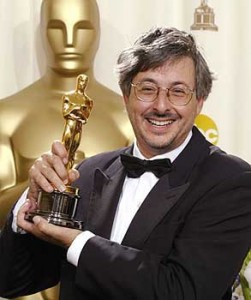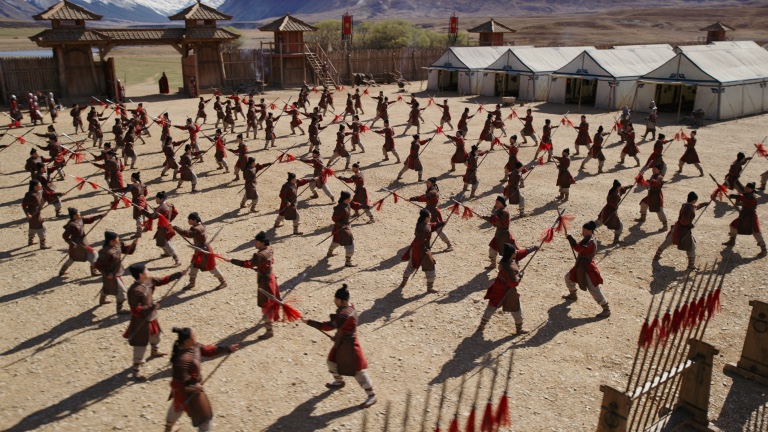
Oscar-winning Australian director of photography Andrew Lesnie, best known for his imaginative and groundbreaking cinematography on his masterpiece, The Lord of the Rings trilogy of films, died on Monday of a heart attack at the age of 59.
His sudden death came as a shock to the top ranks of world cinema. “Andrew was one of our greatest cinematographers,” said Ron Johanson, president of the Australian Cinematographers Society. “It’s a huge loss. He leaves such a void.” The ASC has decided to dedicate its annual awards ceremony, taking place in Hobart on Saturday, to Lesnie.
The lion’s share of his career was spent as DP for director Peter Jackson on eight films over a 17 year span. They included the three Lord of the Rings films and the related trio of Hobbit movies, all based on the fantasy novels of J.R.R. Tolkien. Together they grossed an astounding $6 billion in worldwide box office receipts. Other collaborations with the New Zealand director included the reboot of King Kong and The Lovely Bones.
Jackson paid tribute to Lesnie on his Facebook page: “Andrew created unforgettable, beautiful images on screen, and he did this time and again, because he only ever served what he believed in. He was his own artist, separate from me, but always working generously to make what we were trying to create together better.
“Dearest Andrew, you never sought nor wanted praise. You never needed to hear how good you were. You only ever cared about doing great work and respecting the work of others. But on behalf of all those who were lucky enough to collaborate with you, love you and in turn, respect your mastery of story, of light and of cinema magic – you are one of the great cinematographers of our time.”
Lesnie received an Academy Award for best cinematography in 2002 for Lord of the Rings: Fellowship of the Ring and a BAFTA award in 2004 for Lord of the Rings: Return of the King. He won the Australian Cinematographers Society cinematographer of the year award in 1995 for Babe, directed by Chris Noonan. And he became a member of the ASC hall of fame in 2002.
Lesnie’s final shoot, The Water Diviner, about the aftermath of Gallipoli, a battle in which many Australian soldiers died, has just opened in the U.S. Actor Russell Crowe who stars and also directed the film tweeted: “Devastating news from home. The master of the light, genius Andrew Lesnie has passed on.”
Other notable DP credits for Lesnie include Babe, which won an Oscar for best visual effects, and its sequel, Babe in the City; Rise of the Planet of the Apes, directed by Rupert Wyatt; and I Am Legend, starring Will Smith and directed by Frances Lawrence.
In the last two decades of a career that spanned 40 years, Lesnie worked at the cutting edge of the technological changes that have revolutionized filmmaking and cinematography, from digital cameras to new tools such as pre-viz and digital intermediates.
Foremost he had to keep up with the non-stop explosion of computer graphics over that span which required constant adaptation. In the CG realm, he was one of the first DP’s to deal with “on-screen mo-cap” where sensors get placed on actors who perform their role against greenscreen. They then get turned into creatures through the magic of CG enhancement. Lesnie’s camera captured Andy Serkis’ motion-capture star turn as Gollum/Smeagol in the Lord of the Rings movies and Cesar in The Rise of the Planet of the Apes.
In The Unexpected Journey, the first of the Hobbit films, Lesnie for the first time had to contend with shooting digitally, as well as doing it in 3D at 48 frames per second, double the normal frame rate, per Jackson’s request in the controversial pursuit of more visual clarity. Another tool he used was “slave motion control” photography. This technology makes actors look to be different sizes in scenes where they seem to be together in the same frame, when in actuality, they were shot separately with two different cameras.
Throughout, Lesnie balanced such maddening technological imperatives with artistic considerations. “There was a lot of room for improvisation on the set of The Hobbit, in both performance and coverage,” he told Below the Line in a 2012 interview. “Even with the huge amount of preparation we’d done, it was important to remain open to a good idea or a happy accident. That’s one reason why we wanted the camera systems to be as flexible as possible, so we could exploit an opportunity if one presented itself.”
Lesnie is survived by his partner Marce and two children, Jack and Sam.





